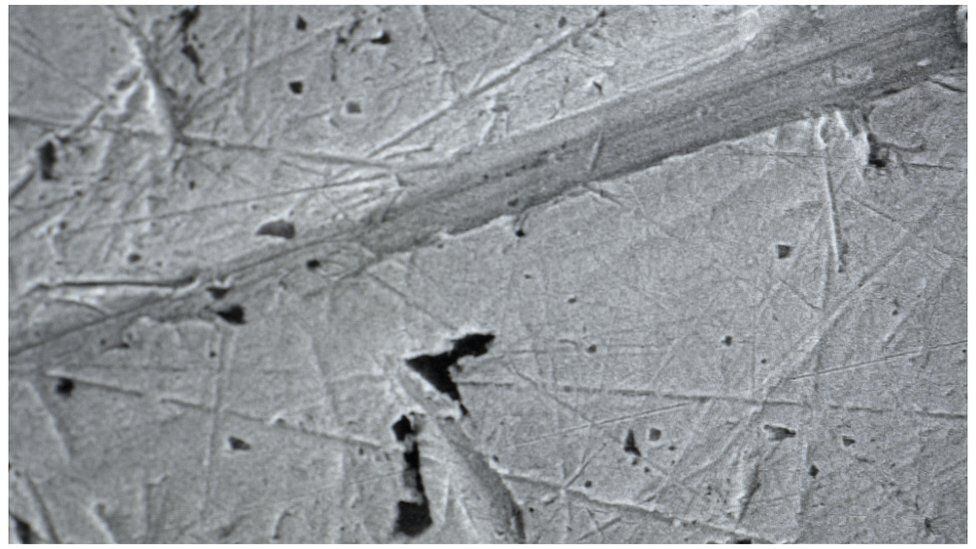An ancient gold coin proves that a third-century Roman emperor who had been erased from history as a fictional character did indeed exist, scientists say.
The coin, a gold coin bearing the name of Esponanio and its face in profile, was found more than 300 years ago in transylvaniaa remote outpost of the then vast Roman empire.
LOOK: “Our mother killed the man who abused us with a knife”
At the time it was believed to be false and was stored in a museum closet.
But now, scientists say that signs of scratches visible under a microscope are evidence that the coin was in circulation some 2,000 years ago.
Professor Paul Pearson, from University College London, who led the research, told the BBC he was astounded by the discovery.
“What we have found is an emperor. She was a figure that was believed to be fictitious and dismissed by experts,” he stated.
“But we think it was real and had a role in the story.”
The coin in question was among a small hoard discovered in 1713. It was believed to be a genuine Roman coin until the mid-19th century, when experts they suspected that it may have been produced by counterfeiters of that timedue to the crude design.
The final blow came in 1863, when Henry Cohen, then the leading expert at the National Library of France, considered the problem for his great catalog of Roman coins. He declared that they were not only “modern” forgeries, but poorly made and “ridiculously imagined”. Other specialists agreed and to this day Esponsiano has been dismissed in academic catalogues.
However, Professor Pearson suspected otherwise when he saw photographs of the coin while doing research for a book on the history of the Roman Empire. could see scratches on the surface which he thought may have been produced when the coin was in circulation.
He contacted the Hunterian Museum at the University of Glasgow where the coin was kept in a cupboard along with three others from the original hoard, and asked if he could work with researchers at that institution.
They examined the four coins under a powerful microscope and confirmed – in the peer-reviewed research publication PLOS ONE – that they were actually scratches whose patterns were consistent with coins being struck against each other within a coin purse.
A chemical analysis also showed that the coins had been buried in the ground for hundreds of years, according to Jesper Ericsson, who is the museum’s numismatic curator and collaborated with Professor Pearson on the project.

Who was Sponsiano?
The researchers’ task now was to answer who was the emperor they had just rediscovered.
Experts believe that he was a military commander who was forced to crown himself Emperor of Dacia, the most remote and difficult to defend province of the Roman Empire.
Archaeological studies have established that Dacia was cut off from the rest of the empire around the year 260. There was a pandemic, there was also a civil war and the empire was fragmenting.
Surrounded by enemies and cut off from Rome, Sponsianus likely assumed supreme command during a period of chaos and civil war, protecting Dacia’s military and civilian population until order was restored and the province was ruled out. evacuated between 271 and 275 AD. c.according to Jesper Ericsson.
“Our interpretation is that he was in charge of maintaining control of the army and the civilian population because they were surrounded and completely isolated,” he explained. “In order to create a functional economy in the province, they decided to mint their own coins.”
This theory would explain why the coins are different from those of Rome.
“It’s possible they didn’t know who the then emperor was because there was a civil war going on,” says Professor Pearson.
“But what they needed was a supreme military commander in the absence of any real power from Rome. He assumed command during a period when it was necessary to command“.
Once the researchers established that the coins were authentic, and that they had uncovered what they thought was a forgotten Roman emperor, they alerted experts at the Brukenthal Museum in Sibiu, Transylvania, which also has a Sponsonian coin.
This is part of a legacy from Baron Samuel von Brukenthal, the Habsburg governor of the Grand Principality of Transylvania. The baron was studying the coin when he died and, according to legend, the last thing he did was write a note that read “genuine”.

The Brukenthal Museum specialists had classified the coin as a historical forgery, like the rest of the experts. But they changed their mind after seeing the research done in the UK.
The discovery is of particular interest for the history of Transylvania and Romania, according to the interim administrator of the Brukenthal National Museum, Alexandru Constantin Chituță.
“For the history of Transylvania and Romania in particular, but also for the history of Europe in general, if these results are accepted by the scientific community, they will mean the addition of another important figure to our history,” he said.
The coins are found Exhibited at the Hunterian Museum in GlasgowScotland.
Source: Elcomercio
I am Jack Morton and I work in 24 News Recorder. I mostly cover world news and I have also authored 24 news recorder. I find this work highly interesting and it allows me to keep up with current events happening around the world.

:quality(75)/cloudfront-us-east-1.images.arcpublishing.com/elcomercio/GE3TCNBNGEYS2MRUKQYDAORRG4.jpg)


:quality(75)/cloudfront-us-east-1.images.arcpublishing.com/elcomercio/YS522KZFQNDPHNPY3WB47UWPH4.jpg)
:quality(75)/cloudfront-us-east-1.images.arcpublishing.com/elcomercio/I5U6ZNGSD5C2VDMQX6HBY6HHRM.jpg)
:quality(75)/cloudfront-us-east-1.images.arcpublishing.com/elcomercio/SQFAYOFLHJBC5OQ6Z3JX37YHT4.jpg)
